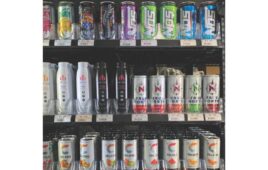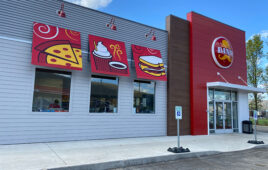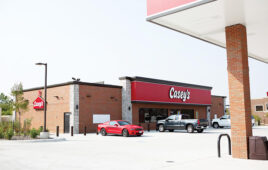New electronic point-of-sale (POS) solutions are rolling out constantly, pushing retailers to make wise decisions based on their needs. Moreover, with PCI compliance nearing, finding the right solution can be more difficult.
POS system owners typically use only a small fraction of the system’s capabilities, noted IBM global products executive Ralph Jacobson. “We did a utilization assessment for a retailer who wanted to rip and replace a large application,” he said. “We found they were using only 10% of the functionality of the old app that was installed six years ago.”
For POS, Jacobson said, the sky is truly the limit. “There are so many functions that can be turned on, however, there are also best practices that can be combined with the software,” he said. “I think retailers should simply take a new look at what they already have installed and determine how much they’re using.”
Secure Source
Sometimes the best solution can come from an unexpected source, which is what happened at Handy Mart Co., said company President Remon Yassa, after he added the CheckFreePay solution to his retail offering.
By integrating the CheckFreePay service to its POS system, Handy Mart customers can use their local c-store as a bill payment center to pay utilities, credit cards and other monthly expenditures. By adding an additional suite of payment processing options, Handy Mart customers can also use the NextDay bill payment service to have bill payments delivered by the next business day. NextDay walk-in bill payments cost $2 each. Standard walk-in bill payments typically cost $1 or $1.50 per bill payment.
Yassa began offering CheckFreePay at his BP stores in fall of 2006, from 10 a.m. to 6 p.m. five days a week. He initially received about 200 payments at each store per month. The service quickly became so popular that he expanded the service first to six and then to seven days a week and kept the offering available until midnight.
Because of the large increase in cash that accompanies bill payment systems like CheckFreePay, Yassa knew that security would be a major issue. At first Handy Mart handled all the transactions themselves. When that became onerous, they devised a system that uses three separate audits, matching payment stubs with cash register receipts to avoid cash shrink. “It’s not really time-consuming once you get into it,” Yassa said. “We spend a maximum of 10 minutes a day doing this.”
However, the star of this security show turned out to be Yassa’s Image Vault security system, which isn’t even directly connected to his CheckFreePay system. Should the payment stub/register receipt system turn up a problem, Yassa can check the daily journal logs on the Image Vault system from just about anywhere in the world. “I can be in England or France and see exactly what is going on in the store, how much is being rung up on the registers,” he said.
System Driving Sales
Adding CheckFreePay brought a lot more foot traffic to his store, said Yassa, who estimated that offering the bill paying service grew his customer base by at least 1,500 transactions per month. He said that half or more of the customers who come into his store because of the service buy something else while they are there, and many of them make return visits when they don’t have bills to pay.
When a customer pays a bill, the cashier processes it and gives the customer a receipt from the CheckFreePay system, keeping a duplicate receipt from the Verifone Ruby register. Yassa’s secure system is linked to the store’s receipt printer, so any transaction that involves the printer is captured in the system’s journal.
So, even though Yassa’s Image Vault system isn’t connected to CheckFreePay, it is connected to his Verifone Ruby, which allows him to use the Image Vault’s journal feature to monitor cashier activities—a real POS bonus.
Integration, Flexibility Key POS Issues
System integration is a major consideration, said Scott Zaremba, who recently installed a new POS system at one of his eight Zarco 66 stores. Small retailers, Zaremba noted, don’t have a lot of bark if the register comes from one company and the POS system comes from another.
“The biggest part for us is that the whole system comes from one company,” Zaremba said. “I don’t have to deal with a register company fighting with a pump company if something doesn’t work, and it’s easier for operators to learn as well.”
Flexibility was another major concern for Zarco, whose pumps dispense as many as 14 different fuels.
“Some of the older register equipment I have can’t track past four,” Zaremba said.
Register downtimes have been minimized with Zarco’s new system as well. “If there’s a power outage, everything comes back up and begins functioning immediately once power is restored,” Zaremba said. “That’s been extremely helpful. In the past, when the power came back on, the pumps might come on quicker than the register or vice versa, and we’d have to go back and reboot everything in sequence. It was a big deal.”
New Opportunities Exist
There are two clear issues with convenience store POS systems, said Lesley Saitta, CEO of Impact 21 Group. One is what the retailer requires, and the other is PCI compliance.
PC-based systems, Saitta said, have different elements and more functionality, which make them more attractive to some retailers than to others. Impact 21 provides retailers with a generic core requirements template for POS systems. Some people add to it, some take away from it, and they all prioritize it.
Smaller retailers like Yassa and Zaremba need a journal system to track sales as part of an overall loss prevention plan, or monitor their customers’ market baskets to improve merchandise ordering, Saitta said.
When it comes to PCI compliance, Saitta said the good news is that the majority of POS system vendors are bringing out compliant systems or upgrades to help existing systems become compliant. “In most cases, they can retrofit,” she noted. “Compatibility with back office systems is a lot easier today than it was even a couple of years ago.”
For example, while Zarco upgraded one of its stores, PCI compliance has been a problem with the equipment at its other locations.
“We’re looking at what we’re going to do to be compliant now and rolling out the same system at all our locations,” Zaremba said. “The reason we haven’t done them already is that the Nucleus system wasn’t certified on the Conoco-Phillips network, and we’re Conoco-Phillips branded at the other locations. Now they are.”
POS systems are becoming somewhat generic, Saitta said. “They all do the same thing, they just do it a little differently,” she noted. “What’s important to one retailer may not matter to another, and from a cost standpoint, they’re relatively close.”
At minimum, Saitta recommends that retailers ask their potential POS system providers to demonstrate how their solutions handle key areas such as merchandise transaction and receipt capture, keyboard maintenance, operations and loss prevention, accounting and payroll.
For Zaremba, one of the most important needs is having integration between all the systems and being able to use the technology to help move consumers through his stores quicker and with consistently positive transactions.
Department stores have been using POS data for decades, often more effectively than other retail channels, IBM’s Jacobson noted. “New software takes it to the next level to provide previously unseen shopper insights,” he said. “Inventory management capabilities can be improved, which helps stores be more profitable by not only increasing store sales, but by realizing a cost-savings on the back-end by not tying up too much capital in inventory.” CSD




